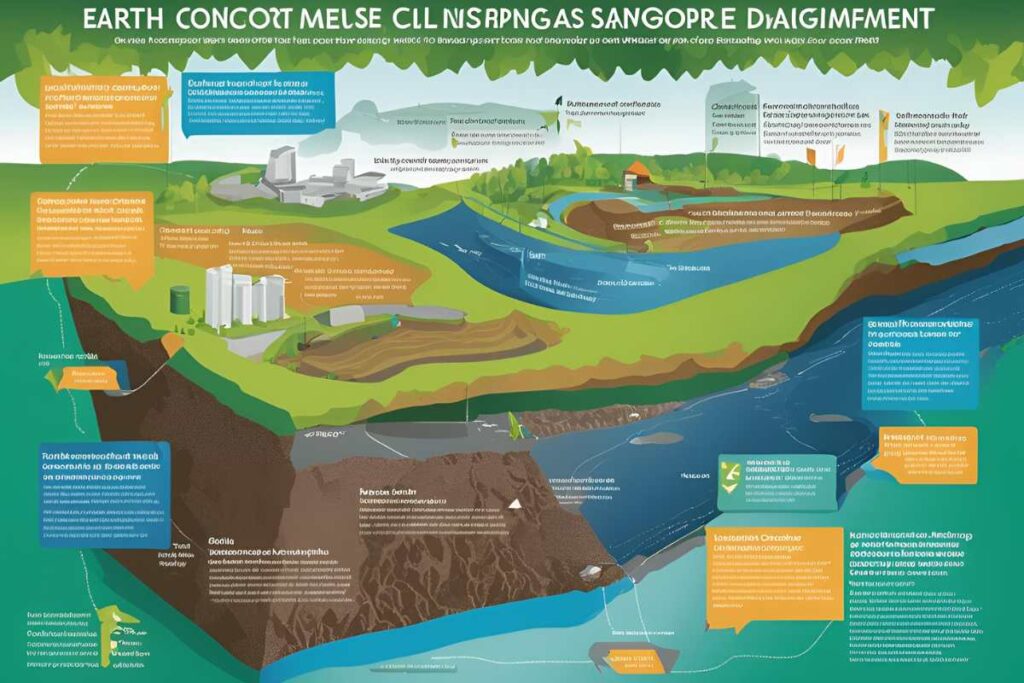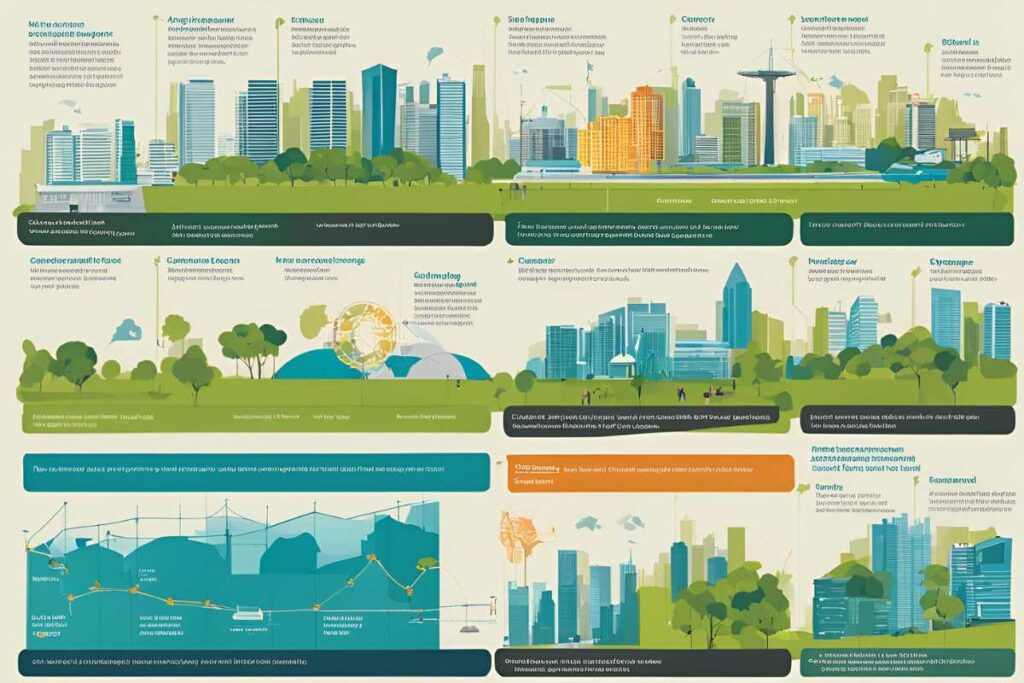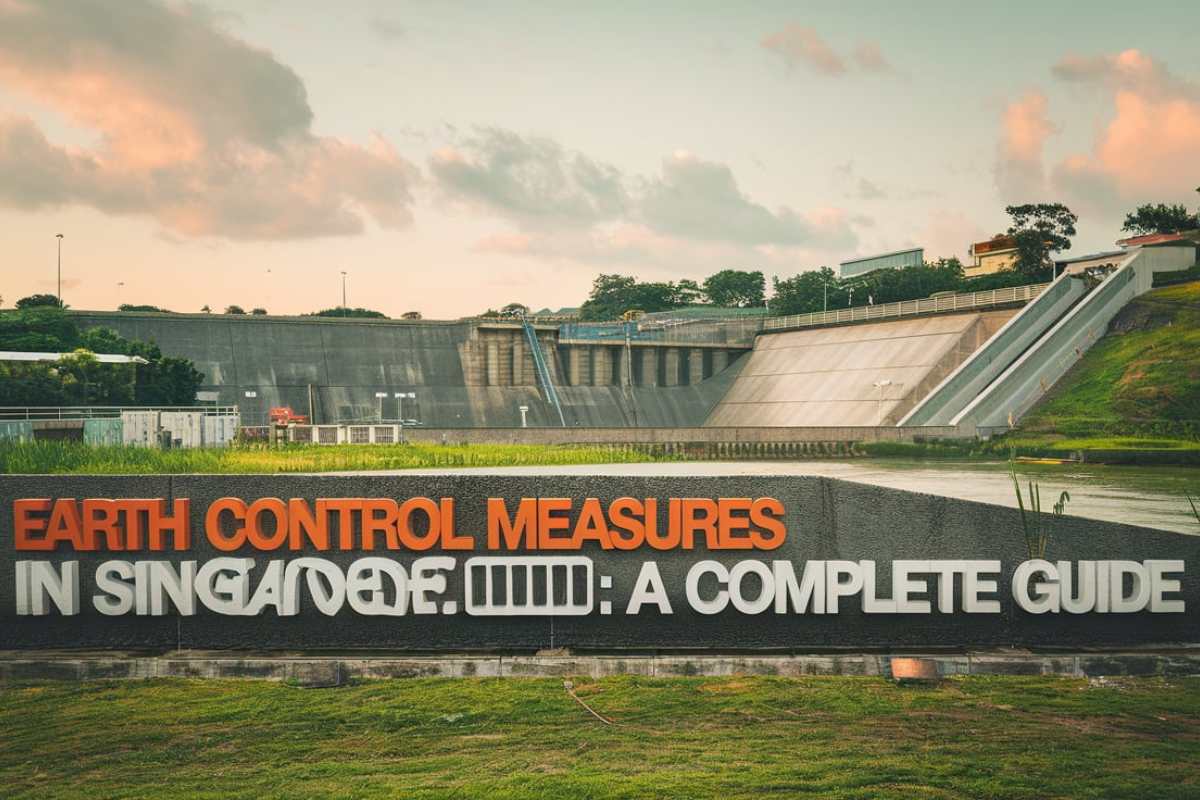- What is an Earth Control Measure (ECM)?
- The Role of an Earth Control Measures Officer
- Earth Control Measures Officer Course in Singapore
- Essential Components of Earth Control Measures
- ECM Regulations and Compliance in Singapore
- Monitoring and Maintenance of Earth Control Measures
- Case Studies
- Conclusion
- FAQs
As urbanization and construction continue to accelerate, the importance of environmental sustainability has never been more pressing.
Earth Control Measures (ECM) play a critical role in protecting natural resources, especially water bodies, from the adverse impacts of construction activities.
In Singapore, compliance with ECM practices is essential to meeting environmental standards and regulations.
This article provides a comprehensive look at ECMs, the responsibilities of an Earth Control Measures Officer, ECM-specific courses in Singapore, and essential ECM components like ECM tanks for effective stormwater management.
What is an Earth Control Measure (ECM)?

An Earth Control Measure is a set of strategies designed to prevent soil erosion, control sediment, and manage stormwater on construction sites.
These practices help minimize the environmental impact of construction by controlling the spread of soil, silt, and debris into public waterways, which is crucial in urban settings like Singapore.
Key Objectives of Earth Control Measures
The primary goals of ECM are to:
- Reduce soil erosion by stabilizing exposed surfaces.
- Control the movement of sediment and debris from construction areas.
- Manage stormwater runoff to prevent contamination of natural water bodies.
By implementing Earth Control Measures, construction sites can ensure compliance with regulatory standards and contribute to sustainable development.
The Role of an Earth Control Measures Officer
An Earth Control Measures Officer oversees and implements ECM on construction sites. This role involves monitoring ECM practices, conducting inspections, and ensuring that ECM installations are in optimal condition to prevent sediment runoff.
Responsibilities of an Earth Control Measures Officer
- Conduct Site Assessments: Evaluate construction sites to identify areas at high risk for soil erosion.
- Implement ECM Practices: Ensures the installation of erosion control blankets, silt fences, and ECM tanks where needed.
- Monitor and Maintain ECM: Regularly inspects ECM installations to ensure they function effectively and conducts necessary maintenance.
- Compliance Reporting: Keeps detailed records of ECM activities and provides these during regulatory inspections.
In Singapore, an Earth Control Measures Officer course is available to train professionals on best practices, legal requirements, and monitoring techniques for ECM. Completing this course is essential for individuals seeking to specialize in ECM roles.
Earth Control Measures Officer Course in Singapore
Singapore offers structured training for individuals aspiring to become ECM Officers through the Earth Control Measures Officer course.
This course is designed to provide in-depth knowledge and skills related to ECM practices, sediment control, and compliance standards.
Course Curriculum and Requirements
The Earth Control Measures Officer course covers:
- Fundamentals of soil erosion and sediment control.
- Techniques for implementing and maintaining ECM installations.
- Regulatory frameworks governing ECM in Singapore, including PUB (Public Utilities Board) standards.
- Hands-on training on tools like ECM tanks and silt fences.
Upon completing the course, candidates are equipped to manage ECM in various construction environments, ensuring that all activities meet local environmental standards.
Essential Components of Earth Control Measures

Sediment Control Installations
Sediment control prevents silt and other debris from entering natural waterways. Common installations include:
- Silt Fences: Installed around the construction perimeter, silt fences trap sediment-laden runoff before it leaves the site.
- Sediment Basins: These engineered structures capture sediment in stormwater, allowing it to settle before discharge.
ECM Tanks in Singapore
In Singapore, ECM tanks are commonly used to manage stormwater on construction sites. These tanks are designed to capture sediment and silt, preventing rainwater from carrying them off.
Benefits of ECM Tanks:
- Sediment Capture: ECM tanks prevent sediments from entering public drainage systems.
- Stormwater Control: They help regulate the flow of stormwater during heavy rains, reducing flood risks.
- Regulatory Compliance: Using ECM tanks can be essential for meeting PUB standards in Singapore.
Erosion Control Blankets and Stabilization Practices
Erosion control blankets are protective covers placed over exposed soil to prevent erosion. Made from biodegradable materials, these blankets help stabilize the soil and promote vegetation growth, creating a natural barrier against erosion.
Stabilization Practices:
- Vegetation Covering: Planting grass or ground cover to bind soil particles and reduce erosion.
- Mulching: Placing a layer of organic mulch over exposed soil surfaces to minimize runoff.
- Slope Stabilization: Using retaining walls or geotextiles to stabilize slopes and reduce soil displacement.
Stormwater Management Techniques
Effective stormwater management is a cornerstone of ECM, ensuring that water flow is controlled and sediment-laden water is filtered before entering natural waterways.
Common Stormwater Management Techniques:
- Swales and Check Dams: Shallow ditches that slow down water flow, allowing sediment to settle.
- Retention Ponds: Capture stormwater and allow sediments to settle before water is released.
- Bioretention Cells: Use vegetation to filter out pollutants and sediments from stormwater.
ECM Regulations and Compliance in Singapore
PUB’s Role in ECM Regulation
In Singapore, the Public Utilities Board (PUB) oversees the implementation of ECM practices on construction sites.
The PUB requires all construction projects to submit an ECM plan before beginning work, ensuring that measures are in place to prevent soil erosion and sediment discharge.
ECM Plan Submission Requirements
Before construction can begin, contractors must submit a comprehensive ECM plan that includes:
- Site Assessments: Analysis of soil types, slope gradients, and areas at risk of erosion.
- ECM Installations: Detailed descriptions of planned installations like silt fences, ECM tanks, and erosion control blankets.
- Maintenance Schedules: Planned inspections and maintenance routines to ensure ECM installations remain effective.
Failure to comply with these regulations can result in penalties and work stoppages, underscoring the importance of effective ECM practices.
Monitoring and Maintenance of Earth Control Measures
Once ECM installations are in place, ongoing monitoring and maintenance are essential to ensure their effectiveness.
Regular inspections help identify any damage or necessary repairs, maintaining the integrity of ECM installations.
Steps in ECM Monitoring
- Routine Inspections: Regular site inspections to assess the condition of ECM installations.
- Documentation and Reporting: Keeping logs of ECM activities and any corrective actions taken.
- Responding to Changes: Adapting ECM strategies based on site changes, weather events, or project phases.
By maintaining effective ECM monitoring, construction sites can prevent environmental damage and comply with regulatory standards.
Case Studies

ECM in Large-Scale Construction Projects
Large construction projects in high-density urban areas like Singapore can pose significant environmental risks due to soil erosion and stormwater runoff.
Implementing ECM practices like ECM tanks, silt fences, and sediment basins is critical to maintaining environmental integrity.
Effective ECM Practices in Residential Developments
In residential construction, smaller-scale ECM practices like erosion control blankets and swales help manage localized soil erosion and sediment control. These methods, combined with regular monitoring, create a sustainable construction process.
Conclusion
Earth Control Measures are essential for minimizing the environmental impact of construction in Singapore, where urban development meets strict environmental standards.
Through the efforts of Earth Control Measures Officers, the use of ECM tanks, and adherence to PUB regulations, construction sites can effectively manage soil erosion and sediment control, promoting sustainable growth.
As ECM technology advances, the construction industry can continue to enhance its environmental practices, contributing to a cleaner, more sustainable future.
FAQs
What is the main purpose of Earth Control Measures?
Earth Control Measures’ main purpose is to reduce soil erosion, control sediment, and manage stormwater to protect water bodies from construction-related pollution.
What does an Earth Control Measures Officer do?
An Earth Control Measures Officer oversees the planning, implementation, and monitoring of ECM on construction sites, ensuring compliance with environmental regulations.
What is an ECM tank used for?
An ECM tank captures and contains sediment-laden runoff on construction sites, preventing sediment from entering public water systems and helping manage stormwater flow.
How can I become an Earth Control Measures Officer in Singapore?
To become an ECM Officer in Singapore, you can enroll in an Earth Control Measures Officer course covering best practices, legal requirements, and monitoring techniques.
What are the benefits of using ECM in construction?
Using ECM in construction helps prevent environmental damage, ensures compliance with regulatory standards, and supports sustainable development.
What regulations govern ECM in Singapore?
The Public Utilities Board (PUB) in Singapore regulates ECM practices. Before starting construction, contractors must submit an ECM plan to the PUB to ensure they meet environmental protection standards.




